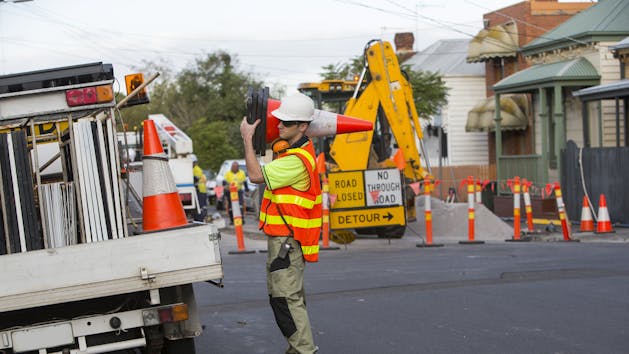Find the right solution for your business with our free Fleet Management Buyer’s Guide.
Top Ten Ways Fleet Drivers Can Use Less Fuel
With fuel costs accounting for about 30% of your fleet’s total operating costs, it makes good business sense to minimize your gas bills as much as possible. Fleets tend to look at a lot of different options when it comes to curbing fuel use — including everything from deploying hybrid-powered vehicles to implementing fleet management software. But sometimes fleet managers overlook one strategy that is basically free to implement, and that can have a significant impact on the fleet’s total fuel use — driver education.
Driver education can help reduce fuel use because:
- Drivers realize they can make a big difference
- Drivers learn that using less fuel improves both job security (by making the firm more profitable) and the environment through reduced emissions
- Drivers are more conscious of how they drive and how it affects fuel consumption
- Drivers understand the safety benefits of driving more responsibly
Here are a few tips for drivers that you can use as part of a driver education program to minimize fuel use.
1. Monitor traffic ahead to minimize gear changes
By keeping an eye on upcoming traffic conditions, drivers can anticipate having to slow down. It is more efficient to keep the truck moving that to start from a complete stop. It also reduces the number of gear changes you need to make.
You should also be checking for any hazards ahead, both for safety reasons and to improve efficiency. Truck drivers can make use of their added height advantage to help monitor traffic and road conditions.
Verizon Connect Route™ plans vehicle routing intelligently, based on available traffic data, to aid drivers in avoiding congestion and taking the most efficient path from one job to the next.
2. Obeying posted speed limits
Speeding can have several negative effects, including additional stress on the engine, increased accident risk and speeding fines. Speeding also decreases the fuel economy of the vehicle. One study reports that every 5 mph driven over 65 mph represents a 7% decrease in fuel economy.
Verizon Connect Mobile™ alerts drivers if they exceed the speed limit in a given area so they keep their vehicle within the limit, while Verizon Connect Fleet records and reports these incidents to help you manage driver behavior.
3. Use your momentum
The momentum your vehicle collects on the flat can be used to get over hills more economically. In some cases, momentum can be used to roll to a stop at traffic lights as well. By removing your foot from the accelerator, the engines in some modern vehicles stop using fuel at all, providing even more savings.
Using your momentum also means not wasting it through heavy braking. By being alert to upcoming traffic conditions you can eliminate unnecessary heavy braking, thus reducing the number of gear changes you need to make and avoiding any problems with a shifting load.
And, when you do have to brake, use your exhaust brake (if you have one) for a smoother stop. Using your exhaust braking system instead of the foot brake not only saves fuel but it also extends the life of your brakes.
4. Use your clutch intelligently
Older trucks with crash gearboxes required double-clutching, but for most modern vehicles it is unnecessary, potentially damaging to the gearbox, and wastes fuel. Clutching intelligently also means minimizing the number of gear changes you make, skipping gears where possible. Remember, with every gear you change up, you improve fuel economy by almost 30% each time.
Part of using your clutch intelligently is keeping your revs down. It's nice to know you've got horsepower under the hood if you need it, but too much needless revving increases fuel use and creates extra wear on the engine. It's also a lot quieter for everyone else. Back off the pedal unless it's absolutely necessary to rev!
5. Use cruise control if you have it
Cruise control can be useful on long journeys, particularly on motorways, to maintain a steady, economical and safe speed. Just remember cruise control doesn't mean you can retire to the sleeper cab!
6. Avoid excessive idling
An idling truck consumes about a gallon of fuel every hour. That can quickly add up. Pause to check if you really do need your engine running. If you don't, turn it off. If you don't currently measure fleet fuel use, investigate the use of GPS fleet tracking so you can monitor and control excessive idling.
7. Fix your deflectors
If your truck has roof-mounted air deflectors, then always adjust them to guide the air over the highest point of the trailer; ideally this should be right at the front if you have an uneven load height. While we're talking about load height, try to keep the load as low as possible to improve the truck's aerodynamics and thus achieve better fuel economy.
8. Avoid overfilling
If a tank is filled to the brim it can easily overflow when the fuel is heated, either by the sun or fuel returned by the engine. This is not only dangerous to other road users, but also wasteful.
9. Keep your tires inflated correctly
Making sure the tires on your vehicle are kept at the correct pressure helps improve fuel economy, improves the life of the tire and reduces the chance of an accident. Make sure they're checked regularly!
10. Be ready for an easy departure in the morning
If you're stopping for the night, park your truck so that you will not have to do a lot of maneuvering in the morning with a cold engine, as this can use a lot of fuel.
As part of an overall fleet management system, fleet managers can use these tips to minimize overall fuel usage and save thousands of dollars.
If you're a driver, perhaps you can suggest your fleet managers reward economical driving by measuring fuel use across the entire team. It can actually become a fun challenge to see who the most fuel-frugal driver is. Not only does reducing fuel use boost the profitability of the firm (improving job security), but everyone can feel good that they're doing their bit to reduce their carbon footprint and stem global warming.
Find out how our platform gives you the visibility you need to get more done.




